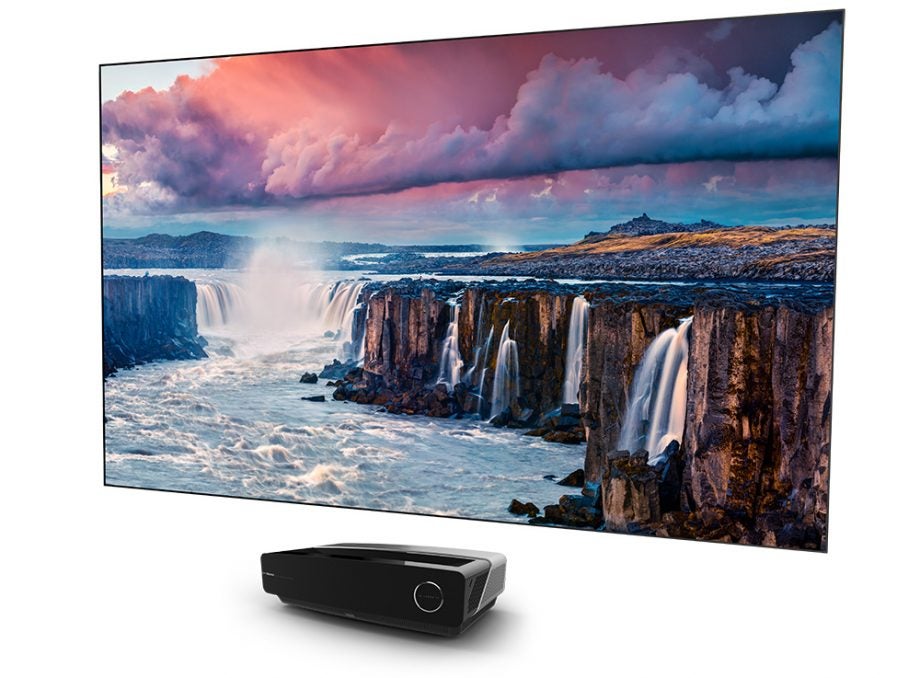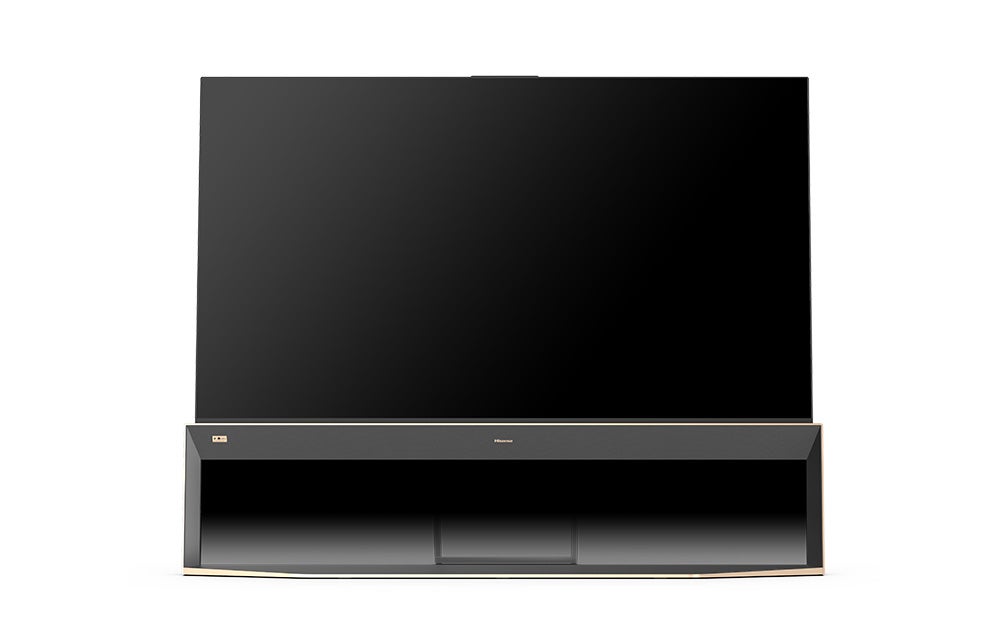Hisense updates UK TV range with Laser and 8K TV models

This year sees Hisense turn 50, and it’s celebrating the landmark with its biggest IFA presentation yet. At the trade show in Berlin, the Chinese brand is showing off its latest Laser and 8K TV models for the UK/European market.
Hisense has brought its latest Laser TVs in the 100L5 Sonic screen, 100L9 and 75L9 models to IFA 2019. These Laser TVs work by using a short-throw projector to beam an image to a thin, lightweight screen that hangs off a wall.
Related: Best TVs 2019
What makes Laser TVs different from traditional projector technology is that they’re capable of higher brightness, so ambient light affects the image less than it would with more normal projection technology.
First up is the 100L5 Sonic Screen, which features a Distributed Mode Loudspeaker (DML) inside the TV’s screen that emits audio. Also on show are the 100L9 and 75L9 Laser TV models, both of which are capable of producing a “near-infinite array of colours, including pure white”, and can achieve Rec.2100 HDR standard.
Related: Hisense H100LDA Laser TV – First Look Review

The Hisense 85U9E 8K TV
Hisense’s ULED range will be getting a run out too. The 85U9E 8K TV is equipped with an 8K Super Resolution Upscaler for beefing up 4K picture quality. The TV also has a ridiculous sounding 1,694 local dimming zones, all of which are controlled by the AI-derived Hi-View Engine, which constantly adjusts picture quality.
Related: What is 8K TV?
Hisense has also unveiled its Dual Cell ULED XD models for the European market. The 4K 65U9E and the 8K 75U9E feature the brand’s Dual Cell technology, which uses a 1080p grayscale panel placed behind an RGB panel for huge contrast ratios (150000:1), and detail that Hisense claims is “unlike any other traditional LCD single panel TV”.
Last but not least, Hisense’s current European range will be on show in the O8B – Hisense’s first OLED model – as well as the U8B and U7B. Trusted Reviews has already reviewed the O8B and U8B models, and we thought both models performed well.


